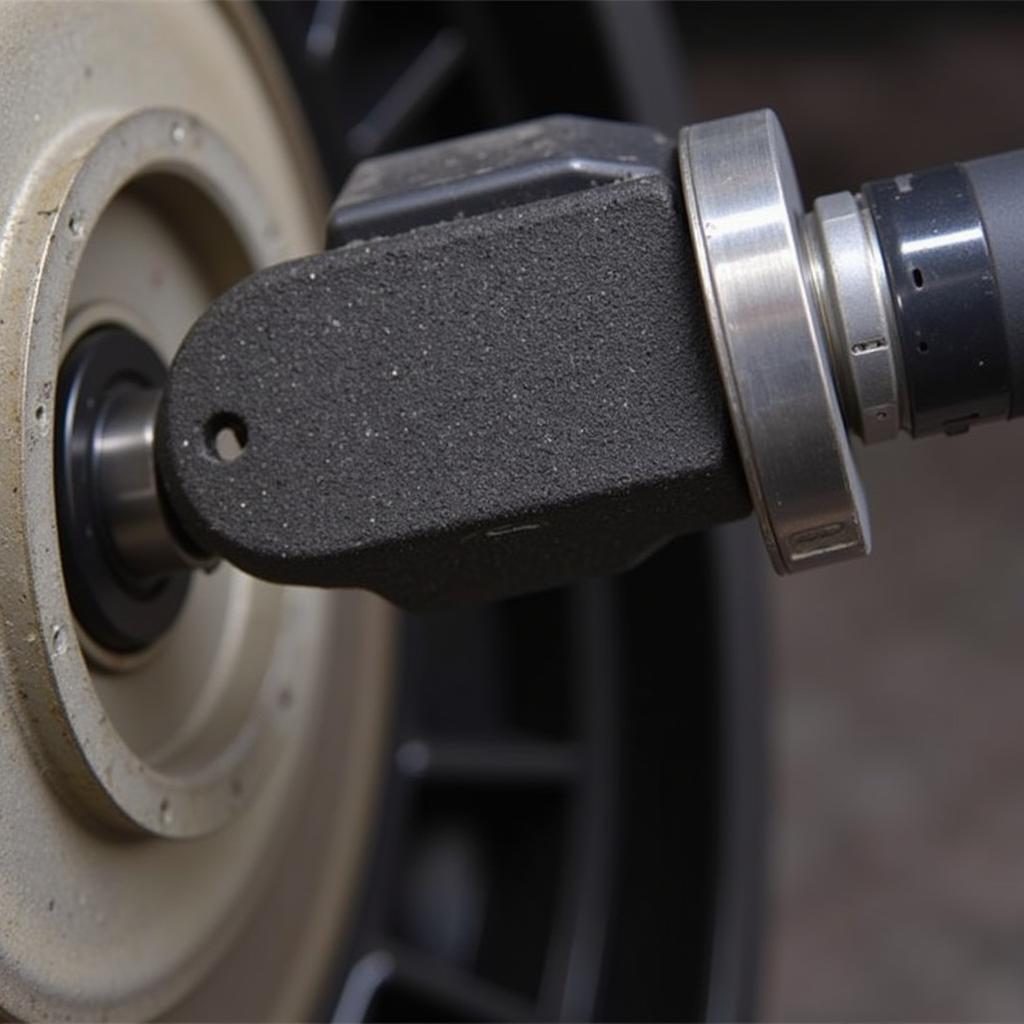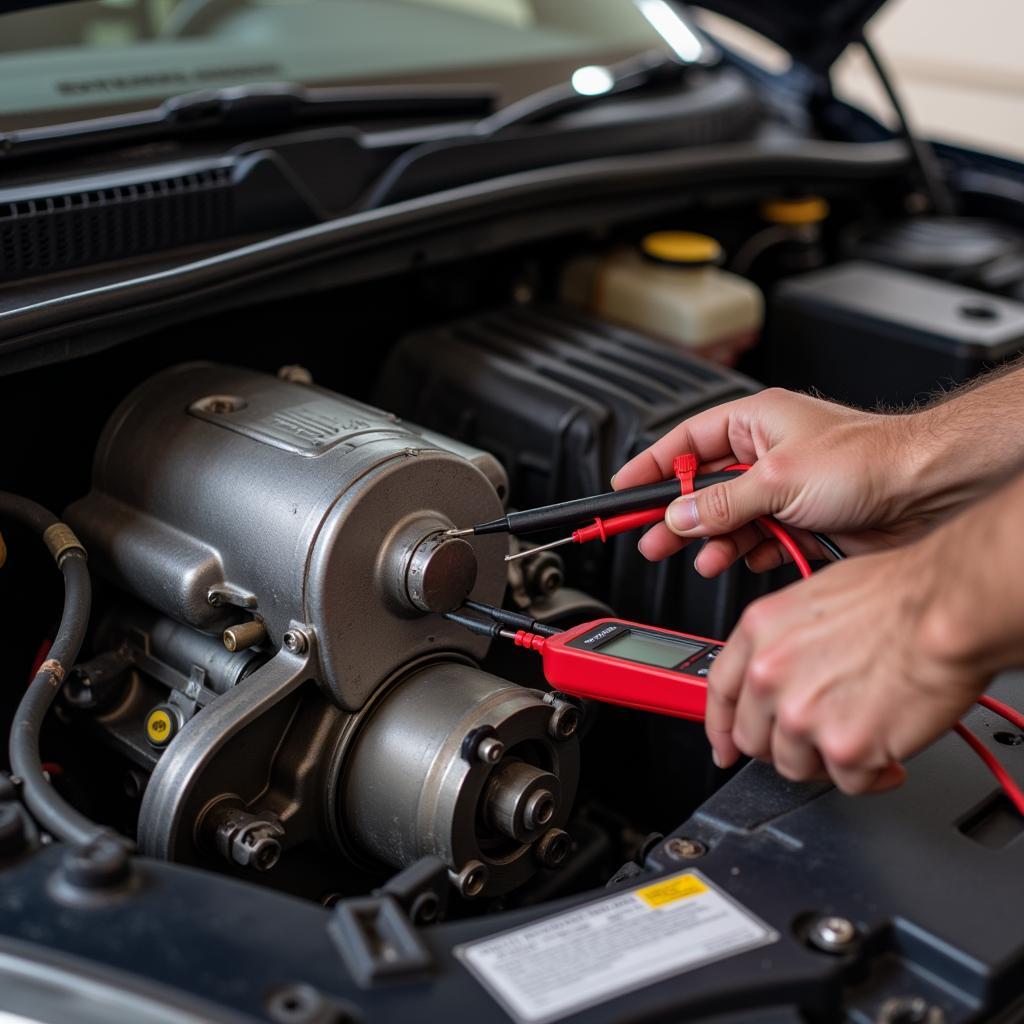The dreaded “brake low warning” light flashing on your dashboard can be an instant stress inducer. While several culprits might be behind this warning, one common issue is a worn-out “brake low warning sensor tab on pad.” This article delves into what this sensor tab is, why it’s important, and how to deal with it when it signals trouble.
Understanding the Brake Low Warning Sensor Tab
The brake low warning sensor tab is a small, yet crucial, component of your vehicle’s braking system. It’s a thin metal tab attached to your brake pad that serves as a wear indicator. As your brake pads wear down over time, this tab eventually comes into contact with the brake rotor when braking. This contact completes a circuit, triggering the “brake low warning” light on your dashboard.
This ingenious system ensures you’re alerted when your brake pads have reached a point where they need replacing, preventing potentially dangerous driving situations.
 Brake Pad Sensor Tab
Brake Pad Sensor Tab
Why is the Warning Light On?
While the brake low warning sensor tab’s primary function is to alert you about worn brake pads, other factors can trigger the warning light:
- Worn-out Brake Pads: This is the most common reason. As explained earlier, worn pads allow the sensor tab to make contact, turning on the light.
- Damaged Sensor Tab: A bent or broken sensor tab can also trigger the warning light, even if the brake pads are still in good condition.
- Faulty Wiring: Issues with the wiring harness connected to the sensor can lead to false positive readings.
- Malfunctioning Sensor: In rare cases, the sensor itself might malfunction and illuminate the warning light erroneously.
Diagnosing the Problem
Determining the exact cause of the brake low warning light requires a bit of investigation:
- Check Your Brake Pads: Visually inspect your brake pads through the spaces between your wheel spokes. If you see less than 1/4 inch of brake pad material remaining, it’s time for a replacement.
- Inspect the Sensor Tab: Examine the sensor tab for any signs of damage like bends or breaks. A damaged tab will need replacement.
- Consult a Mechanic: If you are unsure about your assessment or suspect wiring or sensor issues, it’s best to consult a qualified mechanic. They have the tools and expertise to diagnose the problem accurately.
What Happens if I Ignore the Warning?
Ignoring the brake low warning light, especially when caused by worn brake pads, can lead to:
- Reduced Braking Efficiency: Worn brake pads significantly reduce your vehicle’s ability to stop effectively, increasing your stopping distance and the risk of an accident.
- Damage to Rotors: Driving with worn brake pads forces the metal backing plate of the pad to rub against the rotor, causing damage and requiring costly repairs.
- Complete Brake Failure: In extreme cases, ignoring the warning can lead to complete brake failure, putting you and others on the road in a perilous situation.
Fixing a Brake Low Warning Light Issue
The solution to your brake low warning light depends entirely on the root cause:
- Worn Brake Pads: Replacing your brake pads is the most common fix. It’s recommended to replace all four brake pads at the same time for even braking performance.
- Damaged Sensor Tab: If the sensor tab is damaged but the brake pads are still in good condition, you can replace just the sensor.
- Wiring or Sensor Issues: A qualified mechanic can diagnose and repair any wiring issues or replace a malfunctioning sensor.
2007 chevy trailblazer brake warning light
Preventing Future Issues
Proactive maintenance is key to preventing future brake low warning light issues:
- Regular Brake Inspections: Have your brakes inspected by a qualified mechanic at least once a year or every 12,000 miles, whichever comes first.
- Mindful Driving Habits: Avoid harsh braking and coasting to stops whenever possible. This helps extend the life of your brake pads and other braking components.
- Quality Brake Pads: Invest in high-quality brake pads from reputable brands. While they might cost more upfront, they often last longer and provide better performance.
2003 trailblazer dashboard warning brakes
Conclusion
The brake low warning sensor tab plays a vital role in your safety on the road. Understanding its purpose, recognizing the warning signs, and taking prompt action can save you from potentially costly repairs and dangerous driving situations. Remember, maintaining a healthy braking system is paramount to ensuring a safe and enjoyable driving experience.


